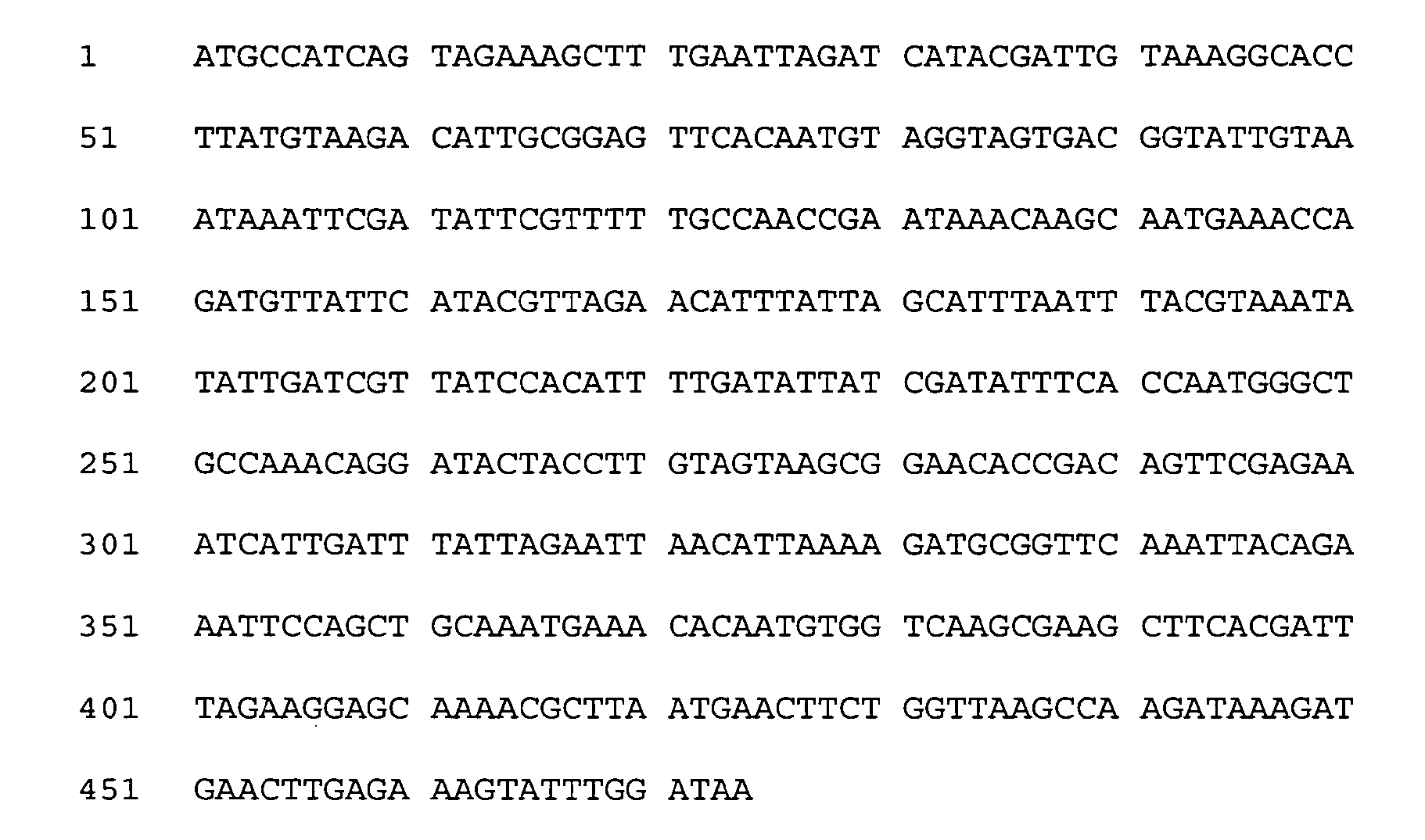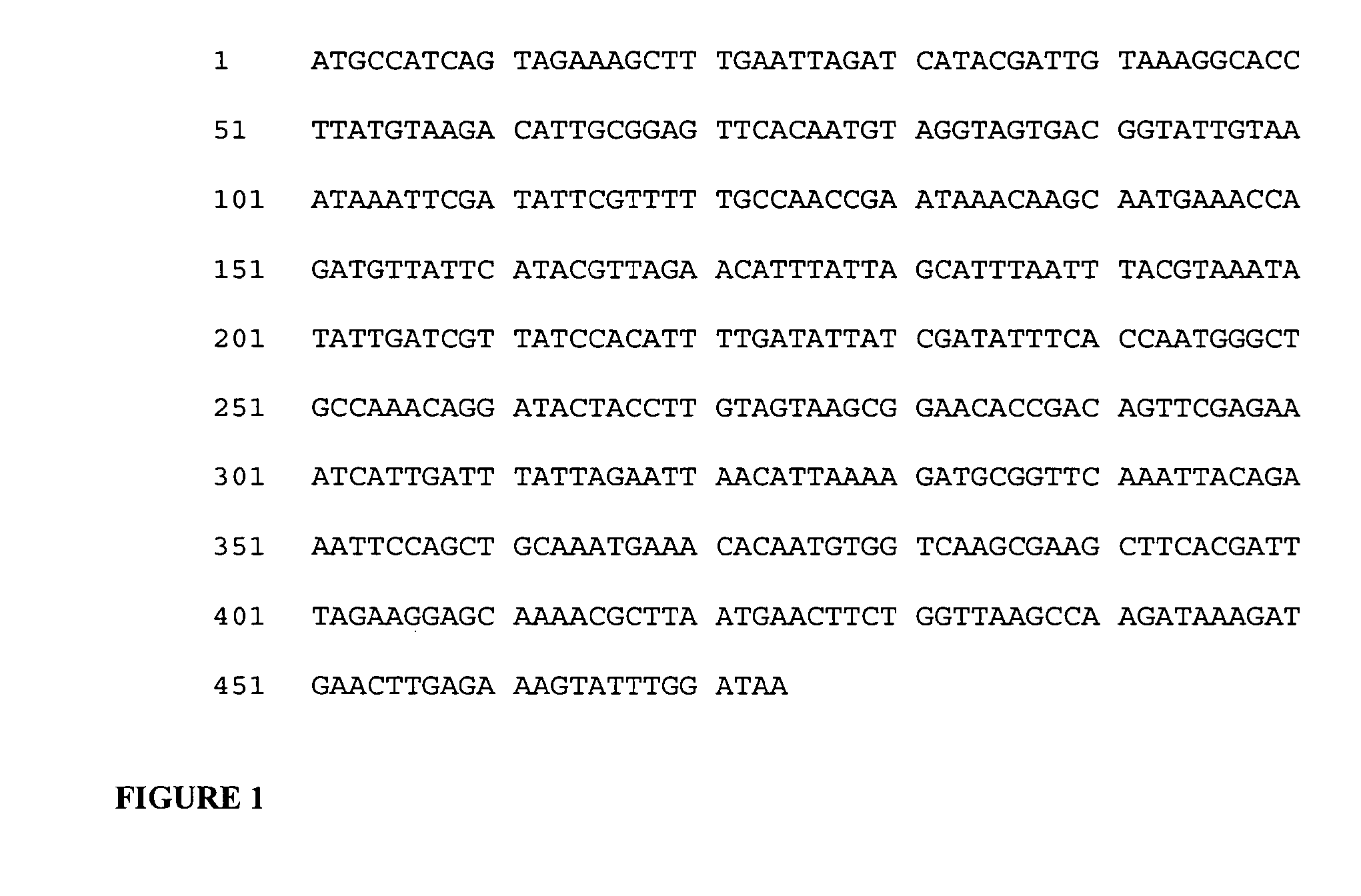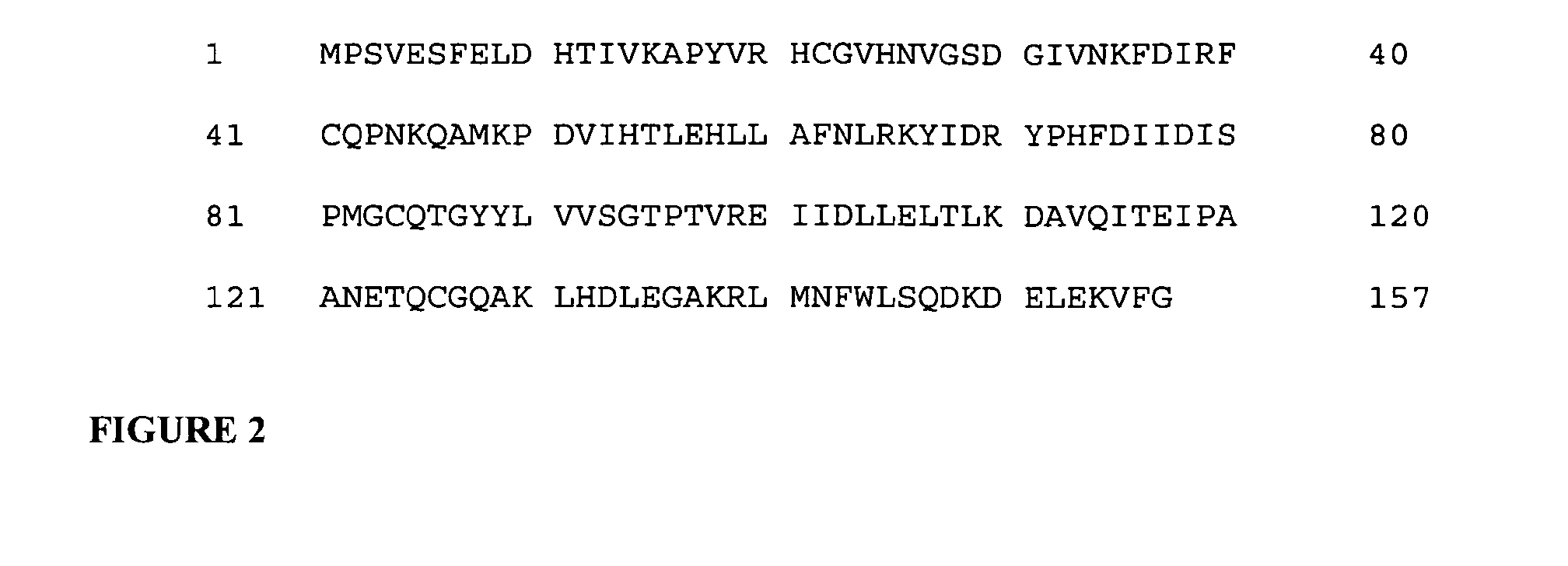B. anthracis prevention and treatment: mutant b. anthracis lacking luxs activity and furanone inhibition of growth, ai-2 quorum sensing, and toxin production
anthracis and luxs gene technology, applied in the field of anthracis prevention and treatment, can solve the problems of lack of luxs gene function, lack of functional ai-2 molecule, growth defects, etc., and achieve the effect of enhancing the immune respons
- Summary
- Abstract
- Description
- Claims
- Application Information
AI Technical Summary
Benefits of technology
Problems solved by technology
Method used
Image
Examples
example 1
Identification, Organization, and Characterization of a Putative B. anthracis luxS Gene
Results
[0150]The unfinished genomic sequence of the Ames strain of B. anthracis has been made publicly available, and partially annotated, by The Institute for Genomic Research (www.TIGR.org). Using the 471-bp B. subtilis luxS gene sequence (via Genbank Accession # CAB 15045.1; SEQ ID NO: 20, FIG. 15) as a template, the partially annotated B. anthracis genome was subjected to BLASTN search under standard parameters using the search interface and algorithm available at tigrblast.tigr.org / ufmg / . This search identified a 474-bp predicted open reading frame (ORF), BA5464, with 72% sequence identity to luxS (also known as ytjB) from B. subtilis (see FIG. 3). The nucleotide sequence of this putative B. anthracis luxS gene (SEQ ID NO: 1) is depicted in FIG. 1. The transcriptional orientations of the flanking predicted ORFs BA5465 and BA5463 indicate that BA5464 is in a monocistronic operon (FIG. 3).
[0151...
example 2
Bacterial Strains and Culture Conditions
[0155]The bacterial strains used throughout the subsequent examples are summarized in Table 1.
[0156]B. anthracis vaccine strain 34F2 (Colorado Serum Company, Denver, Colo.), a derivative of the Sterne strain (Stern, Robinson and Nicol. J. Vet. Sci. An. Ind. 1939; 12:279-302), was routinely grown at 37° C. with aeration in Brain Heart Infusion (BHI) broth (BHI powder is available from Becton Dickinson and reconsituted in water as per the manufacturer's instructions). In some cases, B. anthracis strains were plated and cultured on solid BHI media supplemented with bacto-agar (BHI broth plus 15 g bactoagar per liter).
[0157]V. harveyi strain BB170 (Bassler, Wright and Silverman. Mol. Microbiol. 1994; 13:273-286), (Kindly provided by Bonnie Bassler from Princeton University; also available from Quorex, Inc.), was routinely grown at 30° C. with aeration in Auto-inducer Bioassay medium (AB). The AB medium was made as previously described (Greenberg, ...
example 3
Synthesis of a Functional AI-2 Molecule by B. anthracis Cells
Materials and Methods
[0159]Generation of cell-free culture medium. B. anthracis strain 34F2 cells were grown in BHI broth overnight with aeration at 37° C. V. harveyi strain BB170 cells were grown in AB medium overnight with aeration at 30° C. Cell-free conditioned culture medium (CFM) was prepared from aliquots of each culture at various time points by centrifuging the cultures at 8000×g for 5 min, and passing the supernatant through a 0.2 μm pore-size Acrodisc syringe filter (Gelman Laboratory). CFM preparations were stored at −20° C. until studied.
[0160]V. harveyi bioluminescence assays. V. harveyi bioluminescence assays were performed essentially as previously described (Surette and Bassler. Proc. Natl. Acad. Sci. USA 1998; 95:7046-7050). Briefly, V. harveyi strain BB170 was grown at 30° C. in AB medium with aeration for 16 h, cultures were diluted 1:10,000 in fresh AB broth, and then CFM from the bacterial cells to be...
PUM
 Login to View More
Login to View More Abstract
Description
Claims
Application Information
 Login to View More
Login to View More - R&D
- Intellectual Property
- Life Sciences
- Materials
- Tech Scout
- Unparalleled Data Quality
- Higher Quality Content
- 60% Fewer Hallucinations
Browse by: Latest US Patents, China's latest patents, Technical Efficacy Thesaurus, Application Domain, Technology Topic, Popular Technical Reports.
© 2025 PatSnap. All rights reserved.Legal|Privacy policy|Modern Slavery Act Transparency Statement|Sitemap|About US| Contact US: help@patsnap.com



